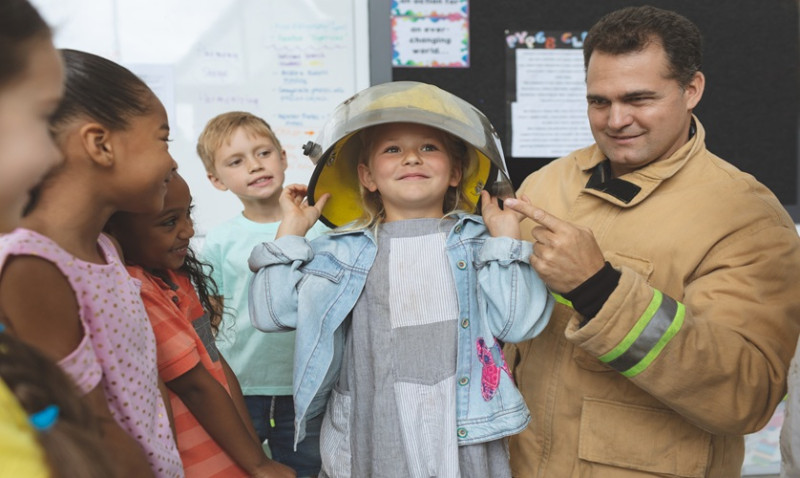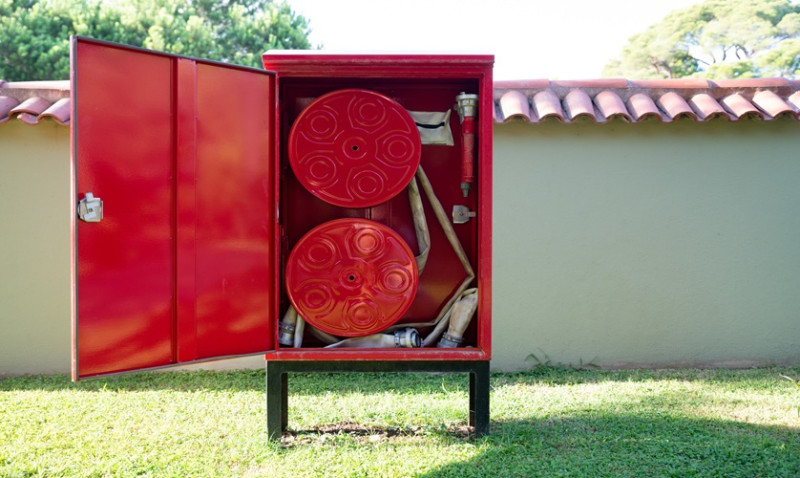
Fire safety is an essential life skill that should start early—and there's no better time to begin than between the ages of 5 and 7. At this age, children are curious, quick to learn, and beginning to understand responsibility within their environment. That’s why a well-crafted fire safety awareness program tailored specifically for young children is not only important—it’s potentially life-saving.
In homes across the UK, thousands of fires occur each year due to unforeseen accidents, electrical issues, or simply a lack of preparedness. Educating children in a fun, engaging way helps them understand what to do in an emergency, how to avoid dangerous situations, and how to become proactive participants in household safety.
Whether you’re a DIY parent working on a child-friendly home set-up, a designer developing residential environments with safety in mind, or a UK professional tradesperson responsible for building family homes, incorporating fire safety education into your work or home can have a major impact on protecting lives.
Why Fire Safety Matters at an Early Age
Children in the 5–7 age group are becoming more independent. They’re learning how to navigate their surroundings, follow rules, and interact with the environment around them. This is a perfect stage to introduce the concept of safety behaviours—especially fire safety.
Kids of this age will often imitate the adults around them. So if you work near open flames or use home essentials such as toasters, hobs, or candles, young observers may want to mimic your behaviour. Without guidance, this can be dangerous.
Another reason early education is important is that reaction times in an emergency may be slower in young children if they don't understand what to do. A child taught the importance of not hiding during a fire, knowing the sound of a smoke alarm, and understanding “stop, drop, and roll” can respond with confidence in a crisis.
Studies show that fire safety programs instilled at an early age are more likely to be remembered and practiced throughout life. It’s not just about teaching rules—it’s about building a safety-first mindset early on.
What an Age-Appropriate Fire Safety Program Includes
To successfully engage a child between the ages of 5 and 7, fire safety education must prioritise simplicity, visual measures, and interactive learning. Here's what should be included in a well-rounded program:
- Understanding Fire and Smoke: Children should learn what fire is, how it spreads, and why smoke is just as dangerous as flames. Simple stories or puppet plays can convey these messages memorably.
- Recognising Fire Hazards: Educate children on common fire risks at home: matches, candles, overloaded sockets, and kitchen appliances. Use clear illustrations or real-life examples from their home.
- Smoke Alarm Recognition: Familiarise them with the sound of a smoke detector and explain what it means. Practice “get low and go” to avoid inhaling smoke.
- Escape Route Planning: Children should actively participate in creating a home fire escape plan. Practice this regularly like a game.
- Emergency Calls: Teach them how and when to call 999 and what to say. Include role-playing to simplify the process.
The use of age-appropriate worksheets, songs, colouring activities, and safety mascots can help drive these messages home in a format that's both fun and effective. Apps and digital safety games also offer interactive experiences to turn serious lessons into enjoyable activities at home or school.
Role of Parents, Educators, and Tradesmen in Fire Safety Education
Empowering children with fire safety knowledge requires a team effort. Parents, teachers, caregivers, and property professionals each play a critical role in shaping the child’s understanding of everyday safety.
For parents and DIY homeowners in the UK, setting safety standards in the home shows children that prevention and awareness matter. This includes having a fire blanket in the kitchen, covering unused plugs, and never leaving devices charging overnight. They’re watching—and learning—from everything you do.
Educators can reinforce these lessons by incorporating fire safety week activities into the curriculum. Schools can invite local fire and rescue services in for demos, introduce safety-themed songs, or arrange virtual tours of fire stations.
For builders, architects, and tradesmen, ensuring homes are fitted with modern, functioning fire safety systems—such as interlinked smoke alarms and clearly marked exits—is vital. Let customers know how safe their homes are, and recommend fire education for their families. You’re building more than a house—you’re shaping a safe space for a family to grow.
Practical At-Home Activities to Reinforce Learning
Repetition is key when teaching children about safety. The more opportunities they have to engage with the information, the better they will retain and recall it. Here are some practical activities you can organise at home to support a child’s fire safety learning:
- Create a Fire Escape Plan Together: Walk through every room and show them how to get outside. Choose a meeting point like a tree or lamppost.
- Smoke Alarm Sound Practice: Regularly test your smoke alarms and let your kids hear it. Teach them that the sound means they must act fast.
- “Stop, Drop, and Roll” Drills: Turn it into a mini dance routine. Make it fun, and it will stick like muscle memory.
- Home Hazard Hunt: Ask your youngster to help you find things that could cause a fire. Use this to teach responsibility and safety awareness.
Parents and caretakers should also display emergency contact numbers near phones or fridge doors, ensure all household exits are clear from obstructions, and practice “crawl low and go” drills during playtime. These steps, while simple, instil confidence in a child when facing a potentially frightening situation.
Recommended Tools and Resources
Plenty of tools and resources are available in the UK to help reinforce your efforts. Here’s a small guide to suitable fire safety materials that cater to young learners:
| Resource | Description | Where to Find It |
|---|---|---|
| Fireman Sam Safety Pack | Includes worksheets, games, and storybooks for ages 5–7 | Available online via Fireman Sam official site and retailers |
| London Fire Brigade Kids Zone | Dedicated children’s section with quizzes, colouring sheets, and videos | London Fire Brigade |
| Child Safe Education App | Mobile app with interactive fire safety games and emergency simulations | Google Play and Apple App Store |
| UK Government Fire Safety Campaign | Free printable materials and safety plan templates | Fire Kills Campaign |
Use these tools regularly to reinforce lessons and maintain an open dialogue about safety. Children respond well to repetition, and using different mediums—digital, print, and real-life practice—makes the lessons stick.
Conclusion: Start Early, Stay Safe
Fire safety starts at home and it starts young. By educating children aged 5 to 7 early on, you build a foundation that could save lives. Whether you’re a parent teaching safety during weekend DIY chores, a tradesman fitting smoke alarms in family homes, or a local classroom teacher, your role is vital.
The UK has made significant strides in promoting fire safety awareness, but there’s always room to do more—especially when it comes to our littlest learners. Through structured programs, simple everyday actions, and community support, we can empower kids to know what to do in an emergency and give parents peace of mind.
As always, stay alert, stay informed, and most importantly—stay safe.







